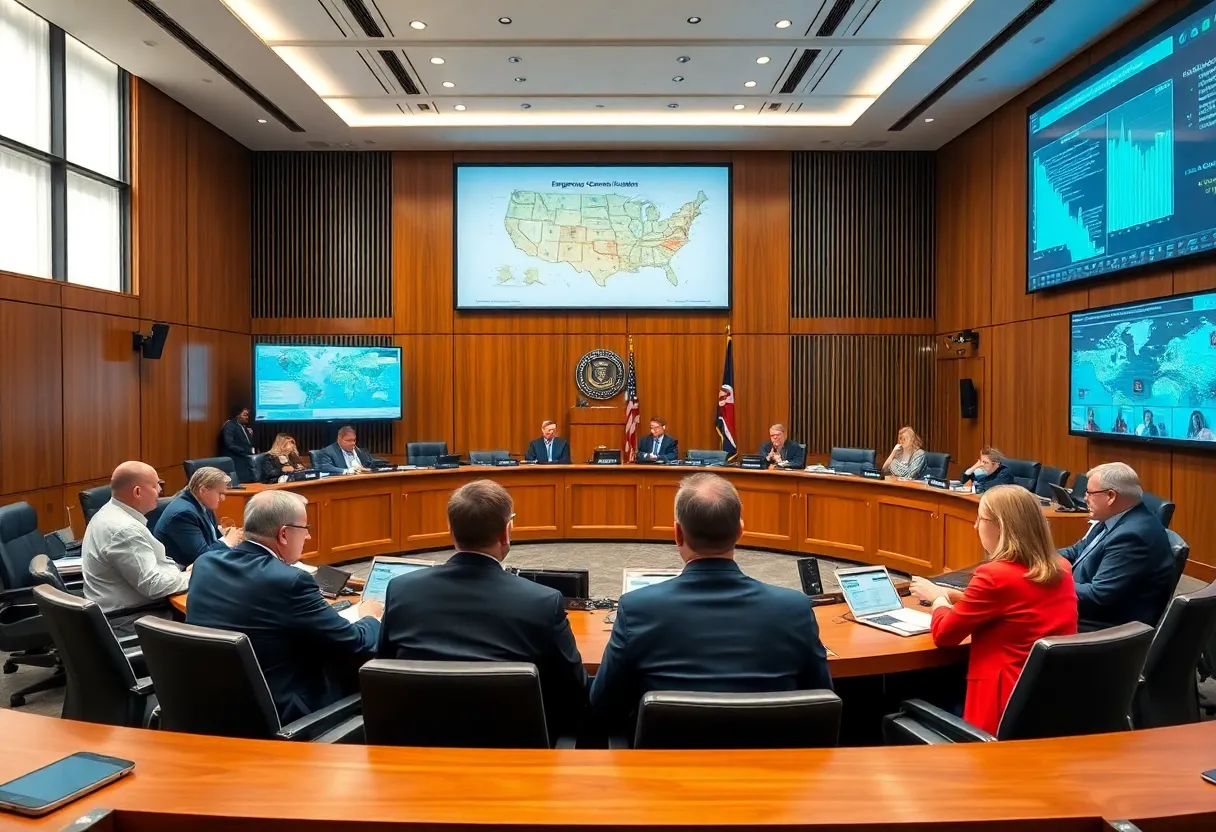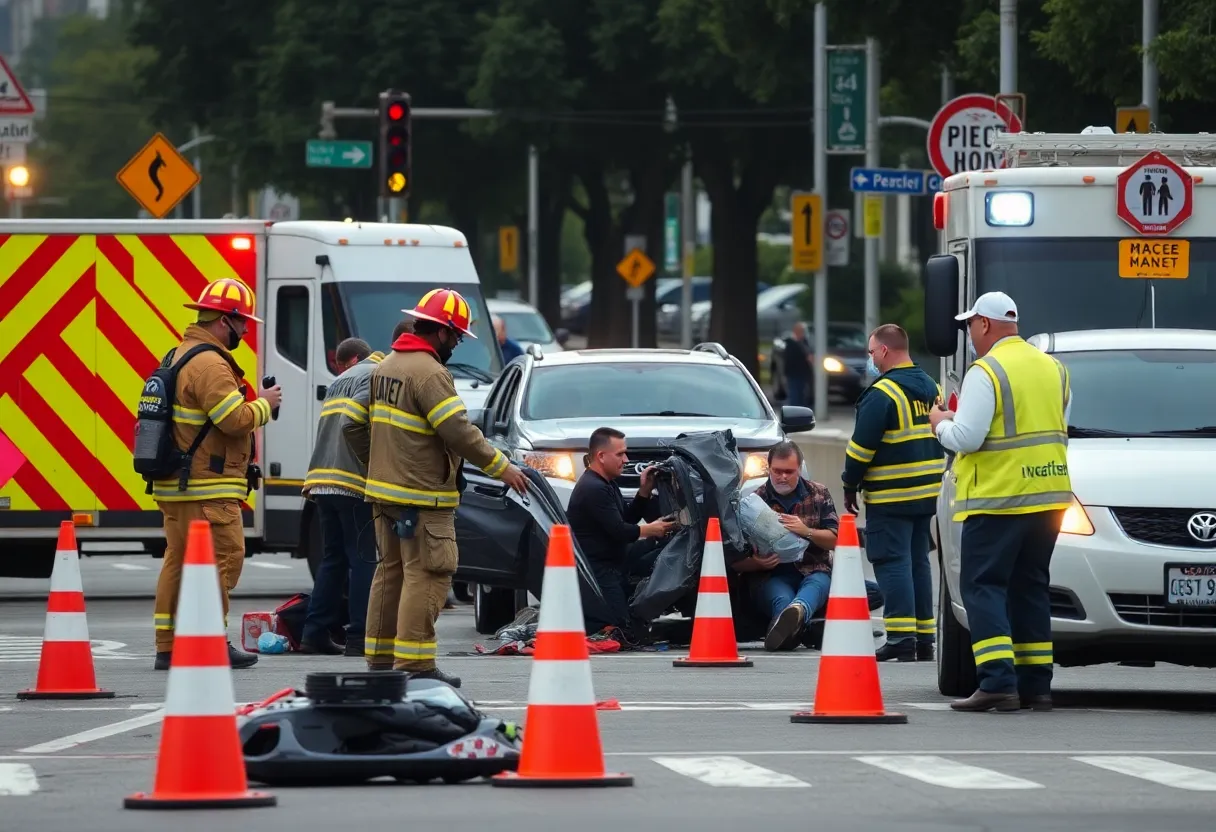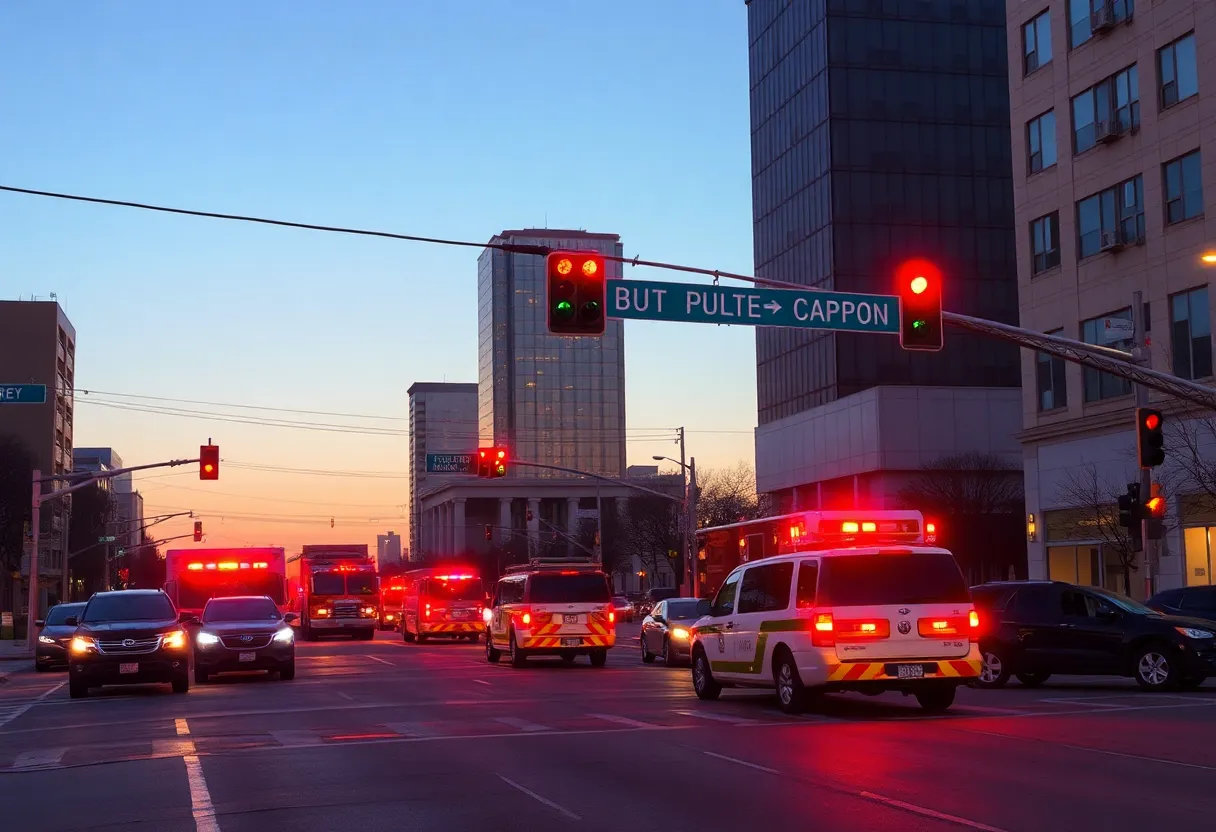Oklahoma City, October 22, 2025
A study convened by Oklahoma City lawmakers highlights the urgent need to upgrade the state’s outdated emergency communications systems. On October 22, discussions focused on enhancing coordination during disasters, especially in rural areas. Lawmakers emphasized the life-saving potential of modern technology and explored various funding options to address critical communication gaps. The committee aims to produce a comprehensive report by the end of the year, marking a significant step towards improving public safety infrastructure across Oklahoma.
Oklahoma City Lawmakers Examine State Emergency Communications
Oklahoma City lawmakers convened a study on the state’s emergency communications systems on October 22, 2025. The House committee focused on reviewing outdated radio networks and proposing upgrades to improve coordination during disasters. This initiative aims to address critical gaps in public safety infrastructure, particularly in rural areas of Oklahoma.
Key discussions centered on the need for modern technology to enhance emergency response efforts. Lawmakers highlighted how such upgrades could save lives, especially in light of recent natural disasters like floods. Experts provided insights on potential funding sources, with the goal of producing a comprehensive report by the end of the year.
Details of the Review
During the session, the committee delved into specific issues with the current systems. Outdated radio networks were identified as a major weakness, potentially hindering effective communication during emergencies. The review emphasized the importance of better coordination to ensure that first responders can operate efficiently across the state.
A significant focus was on rural coverage gaps, where many areas lack reliable emergency communications. This has been a persistent problem, making it harder to manage incidents in less populated regions. Lawmakers discussed strategies to bridge these gaps, including the pursuit of federal grants to fund improvements.
The meeting also covered expert testimony on funding options. These experts outlined various approaches to secure resources, such as applying for state and federal assistance programs. The objective is to create a more robust system that supports public safety statewide, ensuring that all communities are better prepared for future events.
Background and Context
Oklahoma has faced numerous challenges with its emergency communications infrastructure in recent years. Natural disasters, including floods, have exposed vulnerabilities in the existing systems, leading to delays in response and coordination. This study builds on previous efforts to modernize technology, recognizing that effective communication is essential for protecting lives and property.
The House committee‘s work is part of a broader push to update public safety measures in Oklahoma. By aiming for a report by year’s end, officials hope to provide recommendations that can lead to tangible upgrades. This includes investing in advanced technologies that offer wider coverage and more reliable performance during crises.
Overall, the session in Oklahoma City underscores the state’s commitment to enhancing its emergency preparedness. Improving communications systems is seen as a vital step in safeguarding communities, particularly in rural areas where resources are often limited. As discussions continue, the focus remains on practical solutions that can be implemented swiftly to address ongoing risks.
Strengthening emergency communications is not just about technology; it’s about building a safer Oklahoma for everyone. The outcomes of this study could influence future policies and funding decisions, potentially setting a standard for other states facing similar challenges.
In summary, the October 22 meeting marked a proactive step toward modernizing Oklahoma’s emergency systems. By tackling outdated infrastructure and seeking external support, lawmakers are working to ensure better protection for the state’s residents.
To provide more context, the review process involved detailed examinations of current radio networks, which have been in use for many years and may not meet modern standards. For instance, these networks often struggle with signal interference and limited reach, especially in remote areas. Lawmakers pointed out that recent events, such as the floods, demonstrated how these shortcomings can exacerbate emergencies, leading to slower response times and increased risks to public safety.
Experts during the session shared data on potential upgrades, including the adoption of digital systems that offer improved reliability and coverage. They discussed the costs involved and how federal grants could cover a significant portion, alleviating the financial burden on state resources. This approach aligns with national trends in emergency preparedness, where investments in technology have proven effective in saving lives.
Furthermore, the committee’s emphasis on rural areas reflects Oklahoma’s diverse geography, with many communities relying on these systems for critical alerts and coordination. By prioritizing these regions, the study aims to reduce disparities in emergency response capabilities. The expected report by year’s end will likely include specific recommendations, such as timelines for implementation and required funding levels.
This event in Oklahoma City is a reminder of the ongoing need to adapt to evolving risks. As climate-related disasters become more frequent, maintaining and upgrading emergency communications is essential. The committee’s efforts represent a key opportunity to strengthen the state’s resilience and ensure that all residents, regardless of location, have access to reliable support during crises.
In conclusion, the study highlights the critical role of modern technology in emergency management. Through collaborative discussions and expert input, Oklahoma is taking important steps to enhance its systems and protect its people.
FAQ Section
- Q1: What was the main focus of the study convened by lawmakers in Oklahoma City on October 22, 2025?
- Q2: Why did lawmakers emphasize the need for modern technology?
- Q3: What did experts discuss during the session?
- Q4: What gaps were highlighted in the session?
A1: The main focus was reviewing outdated radio networks and proposing upgrades for better coordination during disasters.
A2: Lawmakers emphasized the need for modern technology to save lives, citing recent floods.
A3: Experts testified on funding options, aiming for a report by year’s end.
A4: The session highlighted gaps in rural coverage, pushing for federal grants to enhance public safety across Oklahoma.
Key Features Chart
| Feature | Description |
|---|---|
| Outdated Radio Networks | Reviewed as a weakness in current emergency systems. |
| Proposed Upgrades | Aimed at improving coordination during disasters. |
| Need for Modern Technology | Emphasized to save lives, especially after recent floods. |
| Funding Options | Discussed by experts for potential enhancements. |
| Rural Coverage Gaps | Highlighted, with push for federal grants to enhance public safety. |
| Report Timeline | Aiming for completion by year’s end. |
Deeper Dive: News & Info About This Topic
HERE Resources
Silver Alert Issued for Missing 78-Year-Old in Oklahoma City





